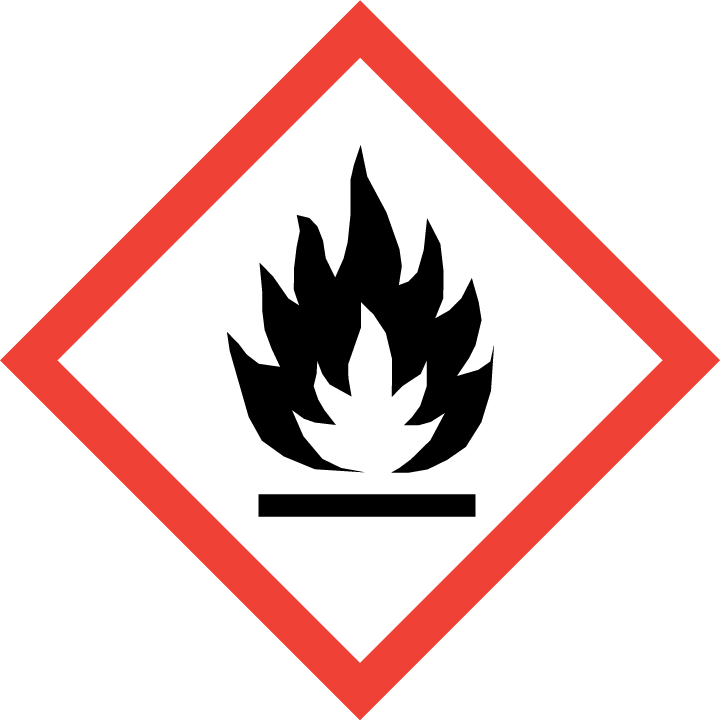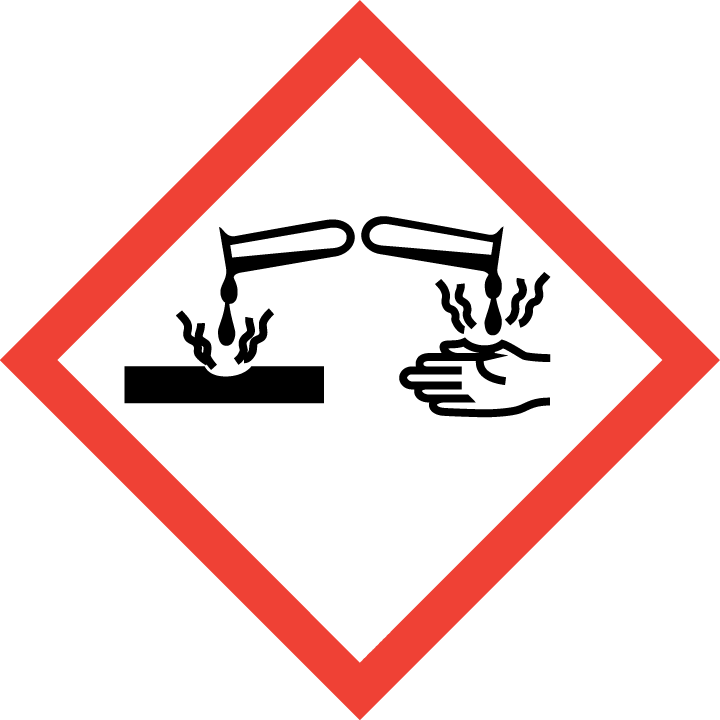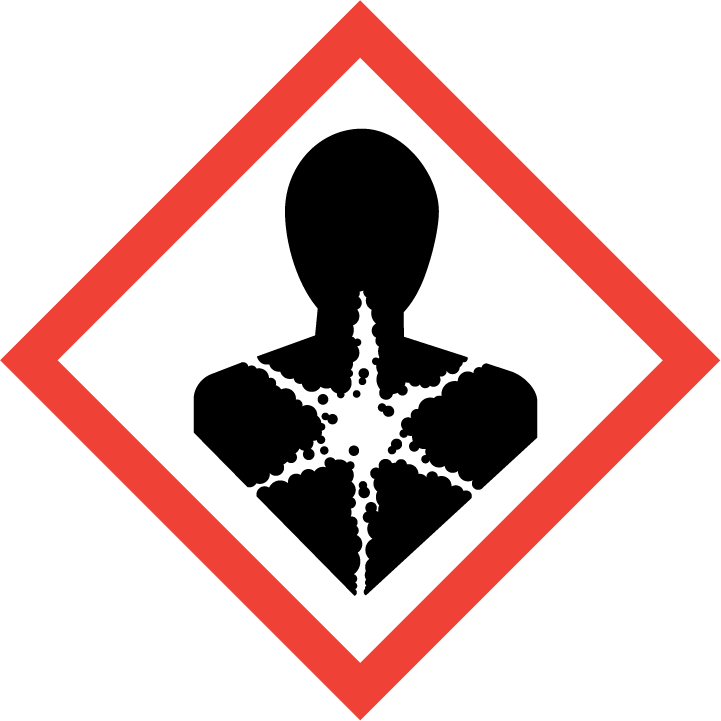SAFETY DATA SHEET
Wenol Metal Polish
1. IDENTIFICATION
Product Identifiers
Product Name:
Wenol Metal Polish
Other Names:
N/A
Product Number(s):
M021
CAS Number:
-
Recommended use of the chemical and restriction on use
Laboratory use.
Company Details
ProSciTech Pty Ltd
11 Carlton Street
KIRWAN QLD 4817
Australia(07) 4773 9444www.proscitech.com
11 Carlton Street
KIRWAN QLD 4817
Australia(07) 4773 9444www.proscitech.com
Emergency Contact Details
ProSciTech Pty Ltd
11 Carlton Street
KIRWAN QLD 4817
Australia(07) 4773 9444www.proscitech.com
11 Carlton Street
KIRWAN QLD 4817
Australia(07) 4773 9444www.proscitech.com
2. HAZARDS IDENTIFICATION
Classification of the substance or mixture
GHS02 Flame
Flammable Liquids 3
H226 Flammable liquid and vapour. Substances and mixtures which, in contact with water, emit flammable gases 1
H260 In contact with water releases flammable gases, which may ignite spontaneously.
GHS08 Health hazard
Germ Cell Mutagenicity 1B H340 May cause genetic defects.
Carcinogenicity 1B H350 May cause cancer.
Specific Target Organ Toxicity - Repeated Exposure 1 H372 Causes damage to the central nervous system through prolonged or repeated exposure.
Aspiration Hazard 1 H304 May be fatal if swallowed and enters airways.
GHS05 Corrosion
Skin Corrosion 1B H314 Causes severe skin burns and eye damage.
Eye Damage 1 H318 Causes serious eye damage
Flammable Liquids 3
H226 Flammable liquid and vapour. Substances and mixtures which, in contact with water, emit flammable gases 1
H260 In contact with water releases flammable gases, which may ignite spontaneously.
GHS08 Health hazard
Germ Cell Mutagenicity 1B H340 May cause genetic defects.
Carcinogenicity 1B H350 May cause cancer.
Specific Target Organ Toxicity - Repeated Exposure 1 H372 Causes damage to the central nervous system through prolonged or repeated exposure.
Aspiration Hazard 1 H304 May be fatal if swallowed and enters airways.
GHS05 Corrosion
Skin Corrosion 1B H314 Causes severe skin burns and eye damage.
Eye Damage 1 H318 Causes serious eye damage
Label Elements



Signal Words
Danger
Hazard Statement(s)
Flammable liquid and vapour. Substances and mixtures which, in contact with water, emit flammable gases 1
In contact with water releases flammable gases, which may ignite spontaneously.
May cause genetic defects
Suspected of causing cancer.
Causes damage to the central nervous system through prolonged or repeated exposure.
May be fatal if swallowed and enters airways.
Causes serious eye damage
Causes severe skin burns and eye damage.
In contact with water releases flammable gases, which may ignite spontaneously.
May cause genetic defects
Suspected of causing cancer.
Causes damage to the central nervous system through prolonged or repeated exposure.
May be fatal if swallowed and enters airways.
Causes serious eye damage
Causes severe skin burns and eye damage.
Precautionary Statement(s)
Obtain special instructions before use.
Do not handle until all safety precautions have been read and understood.
Keep away from heat/sparks/open flames/hot surfaces. - No smoking.
Do not allow contact with water.
Handle under inert gas. Protect from moisture.
Keep container tightly closed.
Ground/bond container and receiving equipment.
Use explosion-proof electrical/ventilating/lighting/equipment.
Use only non-sparking tools.
Take precautionary measures against static discharge.
Do not breathe dusts or mists.
Wash thoroughly after handling.
Do not eat, drink or smoke when using this product.
Wear protective gloves/protective clothing/eye protection/face protection.
If swallowed: Immediately call a poison center/doctor.
Specific treatment (see on this label).
If swallowed: Rinse mouth. Do NOT induce vomiting.
If on skin (or hair): Take off immediately all contaminated clothing. Rinse skin with water/shower.
IF INHALED: Remove person to fresh air and keep comfortable for breathing.
If in eyes: Rinse cautiously with water for several minutes. Remove contact lenses, if present and easy to do.
Continue rinsing.
IF exposed or concerned: Get medical advice/attention.
Get medical advice/attention if you feel unwell.
Brush off loose particles from skin. Immerse in cool water/wrap in wet bandages.
Wash contaminated clothing before reuse.
In case of fire: Use CO₂, sand, extinguishing powder to extinguish.
Store in a dry place. Store in a closed container.
Store in a well-ventilated place. Keep cool.
Store locked up.
Dispose of contents/container in accordance with local/regional/national/international regulations
Do not handle until all safety precautions have been read and understood.
Keep away from heat/sparks/open flames/hot surfaces. - No smoking.
Do not allow contact with water.
Handle under inert gas. Protect from moisture.
Keep container tightly closed.
Ground/bond container and receiving equipment.
Use explosion-proof electrical/ventilating/lighting/equipment.
Use only non-sparking tools.
Take precautionary measures against static discharge.
Do not breathe dusts or mists.
Wash thoroughly after handling.
Do not eat, drink or smoke when using this product.
Wear protective gloves/protective clothing/eye protection/face protection.
If swallowed: Immediately call a poison center/doctor.
Specific treatment (see on this label).
If swallowed: Rinse mouth. Do NOT induce vomiting.
If on skin (or hair): Take off immediately all contaminated clothing. Rinse skin with water/shower.
IF INHALED: Remove person to fresh air and keep comfortable for breathing.
If in eyes: Rinse cautiously with water for several minutes. Remove contact lenses, if present and easy to do.
Continue rinsing.
IF exposed or concerned: Get medical advice/attention.
Get medical advice/attention if you feel unwell.
Brush off loose particles from skin. Immerse in cool water/wrap in wet bandages.
Wash contaminated clothing before reuse.
In case of fire: Use CO₂, sand, extinguishing powder to extinguish.
Store in a dry place. Store in a closed container.
Store in a well-ventilated place. Keep cool.
Store locked up.
Dispose of contents/container in accordance with local/regional/national/international regulations
Primary route(s) of entry
Skin, Inhalation, Ingestion and eyes
Human Health
Inhalation:
Causes damage to the central nervous system through prolonged or repeated exposure.
May be fatal if swallowed and enters airways
May be fatal if swallowed and enters airways
Ingestion:
May cause genetic defects
Suspected of causing cancer.
Causes damage to the central nervous system through prolonged or repeated exposure.
Suspected of causing cancer.
Causes damage to the central nervous system through prolonged or repeated exposure.
Eyes:
Causes severe skin burns and eye damage.
Skin:
May cause genetic defects. Suspected of causing cancer.
Causes severe skin burns and eye damage.
Causes severe skin burns and eye damage.
Environment
Dispose of contents/container in accordance with local/regional/national/international regulations.
3. COMPOSITION/INFORMATION ON INGREDIENTS
Name
CAS No.
Content (w/w)
Classification
Naphtha (petroleum), hydrodesulphurized heavy
64742-82-1
>10-≤25%
-
Kerosine (petroleum)
8008-20-6
>10-≤25%
-
coconut oil diethanolamine condensate
68603-42-9
>10-≤25%
-
Ammonia, Anhydrous
7664-41-7
>2.5-≤10%
-
4. FIRST AID MEASURES
Ingestion
Drink copious amounts of water and provide fresh air. Immediately call a doctor.
Inhalation
In case of unconsciousness place patient stably in side position for transportation.
Skin Contact
Immediately wash with water and soap and rinse thoroughly.
Eye Contact
Rinse opened eye for several minutes under running water. Then consult a doctor.
Other Information
Immediately remove any clothing soiled by the product.
Symptoms of poisoning may even occur after several hours; therefore medical observation for at least 48 hours after the accident
Symptoms of poisoning may even occur after several hours; therefore medical observation for at least 48 hours after the accident
5. FIREFIGHTING MEASURES
Suitable extinguishing equipment
CO₂, powder or water spray. Fight larger fires with water spray or alcohol resistant foam.
HAZCHEM
Not available.
Special protective equipment and precautions for fire fighters
6. ACCIDENTAL RELEASE MEASURES
Personal precautions, protective equipment and emergency procedures
Wear protective equipment. Keep unprotected persons away.
Environmental precautions
Use neutralizing agent.
Ensure adequate ventilation.
Do not flush with water or aqueous cleansing agents
Ensure adequate ventilation.
Do not flush with water or aqueous cleansing agents
Methods and materials for containment and clean up
Absorb with liquid-binding material (sand, diatomite, acid binders, universal binders, sawdust).
Use neutralizing agent.
Dispose contaminated material as waste according to item 13.
Ensure adequate ventilation.
Do not flush with water or aqueous cleansing agents
Use neutralizing agent.
Dispose contaminated material as waste according to item 13.
Ensure adequate ventilation.
Do not flush with water or aqueous cleansing agents
7. HANDLING AND STORAGE
Precautions for safe handling
Ensure good ventilation/exhaustion at the workplace.
Open and handle receptacle with care.
Prevent formation of aerosols
Keep ignition sources away - Do not smoke.
Protect from heat.
Protect against electrostatic charges.
Keep respiratory protective device available
Open and handle receptacle with care.
Prevent formation of aerosols
Keep ignition sources away - Do not smoke.
Protect from heat.
Protect against electrostatic charges.
Keep respiratory protective device available
Conditions for safe storage
Store in cool, dry conditions in well sealed receptacles.
Protect from heat and direct sunlight.
8. EXPOSURE CONTROLS/PERSONAL PROTECTION
Exposure Standards
Material
TWA ppm
TWA mg/m3
STEL ppm
STEL mg/m3
7664-41-7 Ammonia, Anhydrous
50 ppm
35 mg/m³
35 ppm
27 mg/m³
8008-20-6 Kerosine (petroleum)
-
100 mg/m³
-
-
Engineering controls
Keep away from foodstuffs, beverages and feed.
Immediately remove all soiled and contaminated clothing.
Wash hands before breaks and at the end of work.
Store protective clothing separately.
Avoid contact with the eyes.
Avoid contact with the eyes and skin.
Immediately remove all soiled and contaminated clothing.
Wash hands before breaks and at the end of work.
Store protective clothing separately.
Avoid contact with the eyes.
Avoid contact with the eyes and skin.
Personal protective equipment
Eye and face protection
Avoid contact with the eyes and skin.
Tightly sealed goggles.
Tightly sealed goggles.
Skin protection
Protective gloves .
The glove material has to be impermeable and resistant to the product/ the substance/ the preparation.
Due to missing tests no recommendation to the glove material can be given for the product/ the preparation/ the chemical mixture.
Selection of the glove material on consideration of the penetration times, rates of diffusion and the degradation.
Material of gloves
The selection of the suitable gloves does not only depend on the material, but also on further marks of quality and varies from manufacturer to manufacturer. As the product is a preparation of several substances, the resistance of the glove material can not be calculated in advance and has therefore to be checked prior to the application.
Penetration time of glove material.
The exact break through time has to be found out by the manufacturer of the protective gloves and has to be observed.
The glove material has to be impermeable and resistant to the product/ the substance/ the preparation.
Due to missing tests no recommendation to the glove material can be given for the product/ the preparation/ the chemical mixture.
Selection of the glove material on consideration of the penetration times, rates of diffusion and the degradation.
Material of gloves
The selection of the suitable gloves does not only depend on the material, but also on further marks of quality and varies from manufacturer to manufacturer. As the product is a preparation of several substances, the resistance of the glove material can not be calculated in advance and has therefore to be checked prior to the application.
Penetration time of glove material.
The exact break through time has to be found out by the manufacturer of the protective gloves and has to be observed.
Body protection
Immediately remove all soiled and contaminated clothing Wash hands before breaks and at the end of work.
Respiratory protection
In case of brief exposure or low pollution use respiratory filter device. In case of intensive or longer exposure use self-contained respiratory protective device.
9. PHYSICAL AND CHEMICAL PROPERTIES
General information
Appearance
Pasty pink
Odour
Ammonia-like
pH
at 20 °C (68 °F): 11.5
Vapour Pressure
at 20 °C (68 °F): 2 hPa (1.5 mm Hg)
Density
at 20 °C (68 °F): 1.15 g/cm³ (9.59675 lbs/gal)
Boiling Point
221 °C (429.8 °F)
Melting Point
Undetermined
Solubility
Fully miscible in water.
Specific Gravity of Density
Not determined.
Flash Point
>50 °C (>122 °F)
Flammable (Explosive) Limits
Flammable.
Contact with water liberates extremely flammable gases.
Contact with water liberates extremely flammable gases.
Ignition Temperature
210 °C (410 °F)
Formula
Solvent content:
VOC content: 0.00 %
0.0 g/l / 0.00 lb/gal
Solids content: 35.0 %
VOC content: 0.00 %
0.0 g/l / 0.00 lb/gal
Solids content: 35.0 %
10. STABILITY AND REACTIVITY
Reactivity
No further relevant information available.
Chemical stability
No decomposition if used according to specifications.
Possibility of hazardous reactions
Contact with water releases flammable gases.
Conditions to avoid
No further relevant information available.
Incompatible materials
No further relevant information available.
11. TOXICOLOGICAL INFORMATION
Acute effects
The product can cause inheritable damage
LD/LC50 values relevant for classification:
7664-41-7 ammonia, anhydrous.
Oral LD50 350 mg/kg (rat).
Inhalative LC50/4 h 2000 mg/l (rat).
LD/LC50 values relevant for classification:
7664-41-7 ammonia, anhydrous.
Oral LD50 350 mg/kg (rat).
Inhalative LC50/4 h 2000 mg/l (rat).
Eye contact
Strong caustic effect.
Strong irritant with the danger of severe eye injury.
Strong irritant with the danger of severe eye injury.
Skin contact
Strong caustic effect on skin and mucous membranes.
Ingestion
Swallowing will lead to a strong caustic effect on mouth and throat and to the danger of perforation of esophagus and stomach
Carcinogenic.
Carcinogenic.
Inhalation
No sensitising effects known.
Toxicity and irritation
The product shows the following dangers according to the calculation method of the General EU Classification Guidelines for Preparations as issued in the latest version: Irritant.
12. ECOLOGICAL INFORMATION
Ecotoxicity
No further relevant information available.
Persistence and degradability
No further relevant information available.
Bioaccumulative potential
No further relevant information available.
Other adverse effects
Water hazard class 2 (Self-assessment): hazardous for water
Do not allow product to reach ground water, water course or sewage system.
Must not reach bodies of water or drainage ditch undiluted or unneutralized.
Danger to drinking water if even small quantities leak into the ground.
Also poisonous for fish and plankton in water bodies.
Toxic for aquatic organisms
Rinse off of bigger amounts into drains or the aquatic environment may lead to increased pH-values. A high pHvalue harms aquatic organisms. In the dilution of the use-level the pH-value is considerably reduced, so that after
the use of the product the aqueous waste, emptied into drains, is only low water-dangerous.
Do not allow product to reach ground water, water course or sewage system.
Must not reach bodies of water or drainage ditch undiluted or unneutralized.
Danger to drinking water if even small quantities leak into the ground.
Also poisonous for fish and plankton in water bodies.
Toxic for aquatic organisms
Rinse off of bigger amounts into drains or the aquatic environment may lead to increased pH-values. A high pHvalue harms aquatic organisms. In the dilution of the use-level the pH-value is considerably reduced, so that after
the use of the product the aqueous waste, emptied into drains, is only low water-dangerous.
13. DISPOSAL CONSIDERATIONS
General information
Must not be disposed together with household garbage. Do not allow product to reach sewage system.
Disposal must be made according to official regulations
Recommended cleansing agents: Water, if necessary together with cleansing agents.
Disposal must be made according to official regulations
Recommended cleansing agents: Water, if necessary together with cleansing agents.
14. TRANSPORT INFORMATION
ADG label required
HAZCHEM
Not available.
UN Number
None.
Proper shipping name
Not regulated.
Transport hazard class
Void
Packing group
None.
Environmental hazard
No information available.
Special precautions for users
Not applicable.
Additional information
No information available.
15. REGULATORY INFORMATION
Poisons Schedule Number
None of the ingredients is listed.
Other Information
No further relevant information available.
16. OTHER INFORMATION
SDS preparation date
2 February 2025
Comments
This information is based on our present knowledge. However, this shall not constitute a guarantee for any specific product features and shall not establish a legally valid contractual relationship.
This Safety Data Sheet (SDS) has been prepared in compliance with the Preparation of Safety Data Sheets for Hazardous Chemicals Code of Practice February 2016. It is the user's responsibility to determine the suitability of this information for adoption of necessary safety precautions. The information published in this SDS has been compiled from the publications listed in Section 16: to the best of our ability and knowledge these publications are considered accurate. We reserve the right to revise Safety Data Sheets as new information becomes available. Copies may be made for non-profit use.